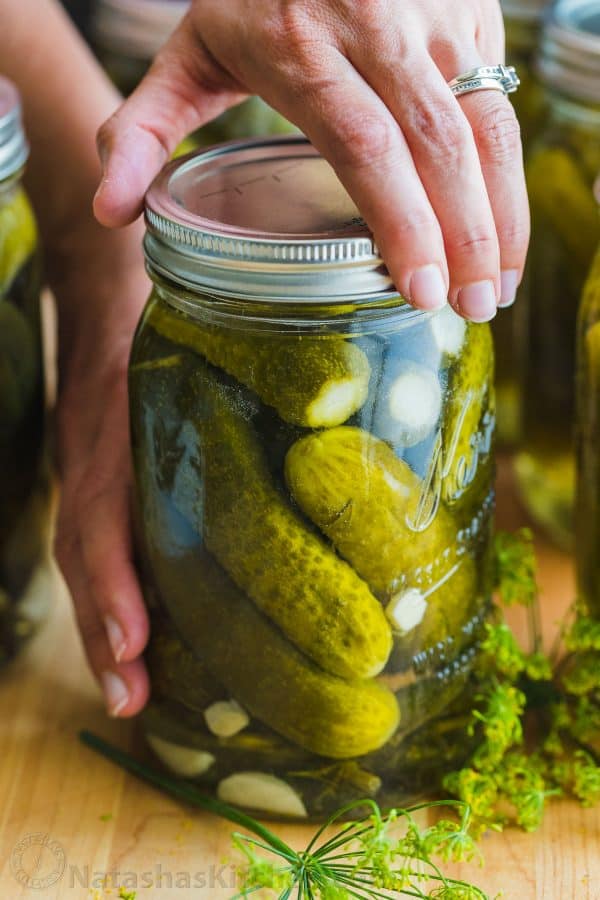This post may contain affiliate links. Read my disclosure policy.
Canned Dill Pickle Recipe
This canned pickles recipe and method was shared by my Aunt Tanya. This dill pickle has the perfect balance of salty and tangy with a touch of sweetness. We are always improving our recipes and listening to reader feedback, so we re-tested and updated this recipe in Sept 2019 to give it a more traditional dill flavor.
What you will Need to Make Dill Pickles:
The ingredients here are simple and inexpensive, especially if you grow your own fresh cucumbers. My mom has horseradish growing in her yard, but if you aren’t able to source fresh horseradish, you can leave it out or substitute with another garlic clove in each jar. Also, pickling salt works great for canning pickles because it is free of iodine and preservatives.
Tips for Crunchy Dill Pickles:
The smaller and fresher the pickles are to begin with, the crunchier they will be. Larger cucumbers will soften more. Do not over process the pickles. If you keep them in the water bath too long, they will become soft. Remove them from the canner immediately after processing 15 minutes. Trim off the ends of the cucumbers with a knife. The ends carry an enzyme that promotes softening. Use small cucumbers and pack tightly. If your cucumbers are too large, you can’t fit as many in the jar and will need more brine.
Home Canning Tools:
With the right gear, canning is easier, safer and way less intimidating. Here is what you will need:
6 Quart Sized (wide-mouth) Mason jars with rings and new lids Large Stock Pot (20Qt+) with Rack (or purchase a canner) Jar lifter to safely transfer the jars
This Dill Pickle Recipe is EASY:
Here is the method for canning these sweet and salty pickles.
How to Test if Canning Seal Has Formed?
When you push in the center of the lid, it should not pop up and down. If you do hear a popping or clicking, the seal did not form and the jar must be refrigerated. Properly Sealed pickles can be stored at room temperature up to a year.
Current Canning Guidelines:
Recipe updated in 2019 to reflect current canning guidelines. Get up to date on the most recent canning guidelines here. It’s a great resource to answer frequently asked canning questions.
Signs of Spoiled Canned Food:
With any type of canning, we follow this advice: “When in doubt, throw it out” Discard and do not eat or taste any canned food if you notice any of the following:
the jar is leaking, bulging, or swollen the jar looks damaged, cracked, or abnormal the jar spurts foam or liquid upon opening the canned food is discolored, moldy, mushy, slimy, or smells bad
Canning Recipes to Explore:
Peach Preserves – my Mother’s recipe for peach jam Marinated Bell Peppers – so amazing with mashed potatoes Refrigerator Pickles – we make these all summer long
Note: Recipe updated Sept 2019 to update the canning method, reflecting current canning guidelines. We are always working on improving our recipes and many of you said you prefer your dill pickles more tangy than sweet. After retesting, we increased the vinegar and reduced the total amount of water for a more traditional flavored dill pickle. Our salt to vinegar ratios were based on this recipe. Q: Who else is obsessed with pickles? I am pretty serious about my pickles and this pickle recipe does not disappoint! Did you grow up eating pickles with everything?










